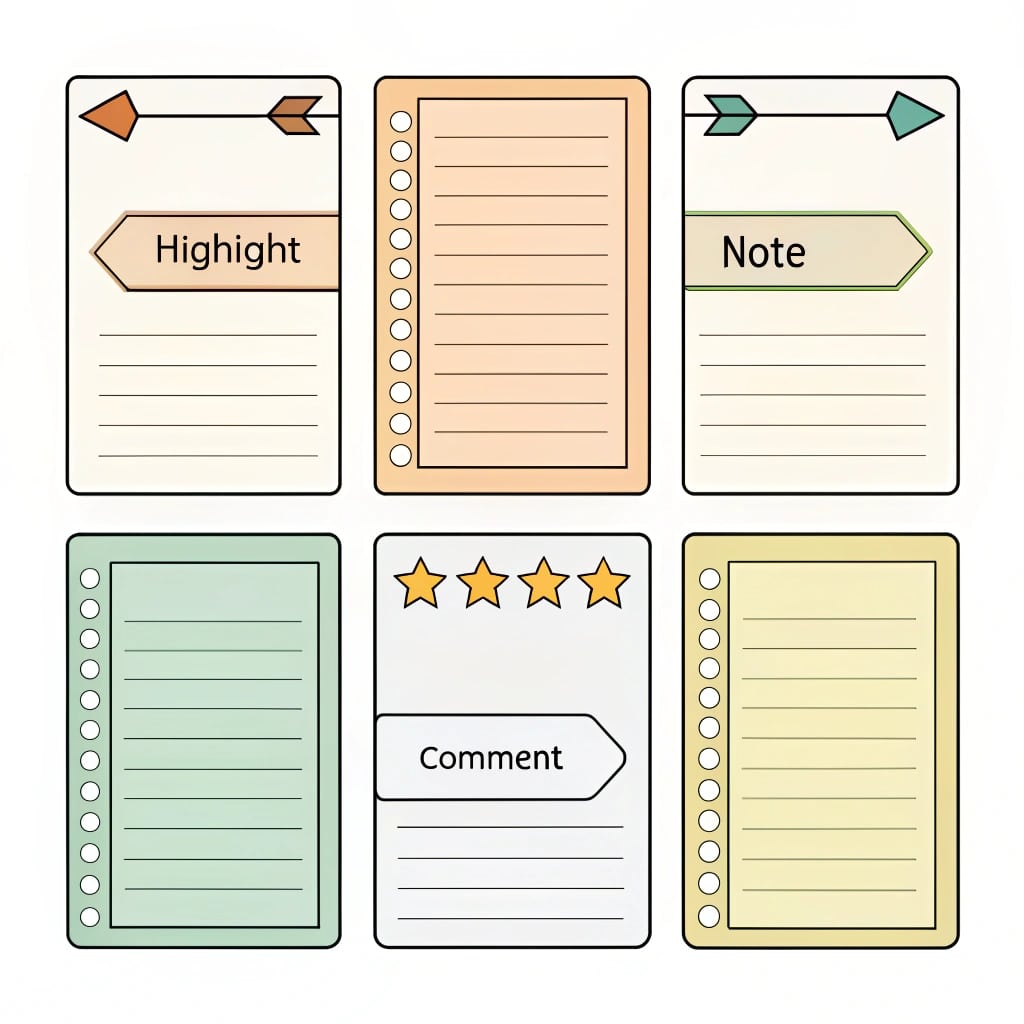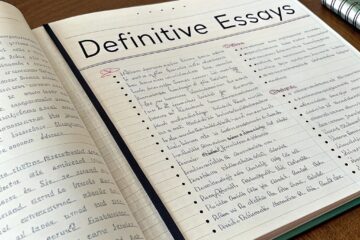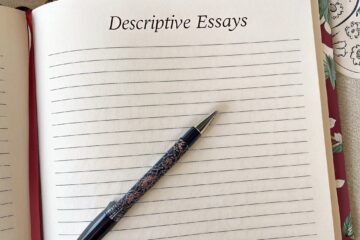Writing Essays Using Annotated Bibliographies: A Complete Guide

The Power of Annotated Bibliographies in Essay Writing
Writing essays using annotated bibliographies can revolutionize your research process and dramatically improve your academic papers. As a student or researcher, you’ve likely faced the challenge of organizing numerous sources while crafting a coherent argument. Annotated bibliographies serve as the perfect solution, helping you evaluate sources critically and build a solid foundation for your essay. This comprehensive guide explores how to effectively integrate annotated bibliographies into your writing workflow, transforming how you approach research papers and elevating the quality of your academic work.
When you master the art of writing essays using annotated bibliographies, you gain a powerful tool that not only streamlines your writing process but also strengthens your analytical thinking. Let’s explore how this approach can take your essays to the next level.
What Is an Annotated Bibliography?
Before diving into how annotated bibliographies enhance essay writing, let’s clarify what they actually are.
An annotated bibliography is a list of citations to books, articles, and documents, with each citation followed by a brief (usually about 150 words) descriptive and evaluative paragraph – the annotation. The purpose of the annotation is to inform the reader of the relevance, accuracy, and quality of the sources cited.
Unlike a simple bibliography that just lists your sources, writing essays using annotated bibliographies requires you to:
- Summarize the main arguments and points of the source
- Evaluate the reliability and credibility of the source
- Reflect on the source’s usefulness for your specific research
- Identify the author’s conclusions
Think of an annotated bibliography as your research diary – it documents your intellectual journey through the literature and helps you organize your thoughts about each source.
Why Annotated Bibliographies Transform the Essay Writing Process
Creating a Roadmap for Your Research
When writing essays using annotated bibliographies, you essentially create a detailed roadmap of your research journey. This organization helps you:
- Track which sources support specific arguments
- Identify gaps in your research
- Avoid revisiting sources unnecessarily
- Maintain focus on your thesis throughout the writing process
Many students dive straight into writing without properly organizing their research, leading to disjointed arguments and missed opportunities to strengthen their thesis. The structured approach of an annotated bibliography prevents these common pitfalls.
Developing Critical Thinking Skills
Writing essays using annotated bibliographies forces you to engage critically with each source rather than simply collecting information. As you annotate each source, you’ll find yourself asking:
- Does this author have credible expertise?
- What evidence supports their claims?
- How does this source relate to other materials I’ve found?
- Where does this source fit within my argument?
This critical engagement helps develop your academic voice and strengthens your ability to synthesize information from multiple sources.
Streamlining the Writing Process
Perhaps the most practical benefit of writing essays using annotated bibliographies is how dramatically it streamlines the actual writing process. With your sources already analyzed and organized, you can:
- Draft your outline more effectively
- Focus on crafting your argument rather than sorting through sources
- Include relevant citations with ease
- Maintain consistency in your argument
Many students report that the actual writing process becomes significantly faster and more focused after completing a thorough annotated bibliography.
Steps to Create an Effective Annotated Bibliography for Essay Writing
Step 1: Identify Your Research Question
Before you begin collecting sources for writing essays using annotated bibliographies, clearly define your research question or thesis statement. This focus will help you select relevant sources and evaluate them in the context of your specific research needs.
Ask yourself:
- What am I trying to prove or explore in my essay?
- What types of evidence will best support my argument?
- What perspectives should I include to create a balanced discussion?
Having clarity on these questions will make your source selection process much more efficient.
Step 2: Locate and Select Appropriate Sources
When writing essays using annotated bibliographies, source quality matters tremendously. Look for:
- Peer-reviewed journal articles
- Books from reputable academic publishers
- Credible organizations’ publications
- Primary sources when appropriate
Remember to include sources that represent various perspectives on your topic. This variety will strengthen your understanding and help you address potential counterarguments in your essay.
A well-rounded collection of sources demonstrates your thorough engagement with the topic and enhances your credibility as a researcher. If you’re struggling to find quality sources, consider consulting with a librarian or using our professional research services.
Step 3: Create Citation Entries
For each source you select, create a proper citation following your required style guide (APA, MLA, Chicago, etc.). Accurate citations are essential when writing essays using annotated bibliographies as they:
- Allow readers to locate your sources
- Demonstrate academic integrity
- Show attention to detail
- Follow disciplinary conventions
Be meticulous with your citation format, as inconsistencies can detract from your credibility and potentially lead to unintentional plagiarism issues.
Step 4: Write Thoughtful Annotations
This is where writing essays using annotated bibliographies truly differs from standard research approaches. For each source, write an annotation that includes:
Summary: In 2-3 sentences, capture the main points or arguments of the source.
Assessment: Evaluate the source’s reliability, potential biases, and strengths/weaknesses.
Reflection: Explain how this source fits into your research and how you plan to use it in your essay.
Here’s an example of an effective annotation:
Smith, J. (2023). Climate change effects on agricultural sustainability. Environmental Research Quarterly, 45(2), 112-128.
Smith examines how climate change is impacting agricultural sustainability across different geographical regions, with particular focus on small-scale farming operations. The research combines field studies from three continents with climate projection models to predict challenges farmers will face in the next decade. While the study offers robust data on temperature and precipitation changes, it somewhat overlooks economic factors that might influence adaptation strategies. This source will be valuable for my essay’s section on practical challenges facing agricultural communities, providing scientific evidence to support my argument about the need for localized climate adaptation policies.
Notice how this annotation clearly explains what the source discusses, evaluates its merits, and connects it directly to the essay being planned.
Transitioning from Annotated Bibliography to Essay Draft
Organizing Your Essay Structure
One of the greatest advantages of writing essays using annotated bibliographies is the natural organization it provides for your paper. After completing your annotated bibliography, review it to identify:
- Major themes that emerge across sources
- Points of consensus among researchers
- Areas of debate or contradiction
- Gaps in existing research your paper might address
These observations can form the backbone of your essay’s structure, with each section addressing a key theme supported by your annotated sources.
Creating a Thesis-Driven Outline
With your annotated bibliography as reference, create an outline that supports your thesis statement. For each section of your outline:
- Identify which sources from your annotated bibliography will support your points
- Note specific quotes or data you plan to incorporate
- Consider how sources might dialogue with each other in your analysis
This approach ensures that writing essays using annotated bibliographies leads to tightly structured, evidence-based arguments rather than loosely connected ideas.
Integrating Sources Effectively
When you begin drafting, your annotated bibliography serves as an invaluable reference tool. For each point in your essay:
- Refer to your annotations to quickly identify which sources support that particular argument
- Use your reflections to remember how you planned to incorporate each source
- Balance direct quotations with paraphrasing and summary
- Create meaningful dialogue between different sources
This integration process is much smoother when you’ve already analyzed your sources through annotations. For more guidance on effective integration of sources, our expository essay guide offers additional insights.
Common Challenges When Writing Essays Using Annotated Bibliographies
Maintaining Focus on Your Research Question
As you collect and annotate sources, it’s easy to get sidetracked by interesting but tangential information. To stay focused when writing essays using annotated bibliographies:
- Regularly revisit your research question
- Ask how each source directly contributes to answering that question
- Be selective about which sources you include
- Note interesting but tangential information for potential future research
This discipline ensures your annotated bibliography remains a targeted tool rather than an unwieldy collection of sources.
Avoiding Annotation Fatigue
Creating thoughtful annotations for multiple sources can become tedious. To combat this challenge when writing essays using annotated bibliographies:
- Set reasonable daily goals (perhaps 3-4 annotations per session)
- Take breaks between annotations to maintain critical perspective
- Vary the types of sources you’re working with in each session
- Remember that quality annotations save time during the writing phase
If you find yourself writing very similar annotations for multiple sources, this might indicate you need to diversify your research or look more critically for distinctions between sources.
Transitioning from Research to Writing
Some students excel at the research and annotation phase but struggle to transition to actual essay writing. To bridge this gap:
- Use your annotations to create a detailed outline
- Start with the sections where your research feels strongest
- Set specific writing goals based on your outline sections
- Remember that your annotations have already done much of the analytical work
Writing essays using annotated bibliographies should make the writing process more fluid, not more complicated. If you’re struggling with this transition, our custom essay help services can provide personalized guidance.
Advanced Techniques for Writing Essays Using Annotated Bibliographies
Creating Thematic Annotations
Once you’ve gathered several sources, consider organizing your annotated bibliography thematically rather than alphabetically. This approach helps you:
- Identify where research clusters around certain themes
- Spot gaps in your research coverage
- See connections between seemingly unrelated sources
- Develop a more sophisticated organizational structure for your essay
For complex research projects, this thematic arrangement can reveal insights that might be missed in a traditional annotated bibliography format.
Developing Annotation Templates
To maintain consistency when writing essays using annotated bibliographies, consider creating templates for different types of sources. For example:
In empirical studies:
- Key research question and methodology
- Major findings and limitations
- Relevance to your specific thesis
For theoretical works:
- Core arguments and conceptual framework
- Relationship to other theories in your research
- Application to your specific research question
Using consistent templates ensures you capture all necessary information while making your annotations more comparable across sources.
Using Digital Tools to Enhance Organization
Several digital tools can streamline the process of writing essays using annotated bibliographies:
- Reference management software (e.g., Zotero, Mendeley)
- Note-taking apps with tagging features
- Mind-mapping tools for visualizing connections between sources
- Cloud storage for accessing your research across devices
These tools can significantly enhance your ability to organize, retrieve, and utilize your annotated sources during the writing process.
How Annotated Bibliographies Improve Different Types of Essays
Research Papers and Theses
For extensive research projects, writing essays using annotated bibliographies is almost essential. The structured approach helps you:
- Manage large numbers of sources effectively
- Identify evolving themes in the literature
- Document your research journey for future reference
- Demonstrate comprehensive engagement with existing scholarship
Many graduate students find that annotated bibliographies form the foundation of literature review chapters in theses and dissertations. For assistance with larger academic projects, our professional capstone project help offers specialized support.
Argumentative Essays
When writing argumentative essays using annotated bibliographies, you gain several advantages:
- Easy identification of sources supporting different sides of an argument
- Clear documentation of the strongest evidence for each position
- Better understanding of potential counterarguments
- More nuanced position development through engagement with diverse perspectives
This thorough preparation leads to more sophisticated argumentative essays that anticipate and address opposing viewpoints effectively.
Literature Reviews
Perhaps the most natural fit for writing essays using annotated bibliographies is the literature review. Annotations serve as building blocks for:
- Identifying major trends and turning points in the literature
- Grouping sources by methodological approach or theoretical framework
- Highlighting contradictions or debates within the field
- Spotting gaps that your research might address
Many successful literature reviews evolve directly from well-crafted annotated bibliographies with minimal structural changes needed.
Best Practices for Creating Professional-Quality Annotated Bibliographies
Be Concise Yet Comprehensive
When writing essays using annotated bibliographies, aim for annotations that are:
- Typically 150-200 words (unless otherwise specified)
- Focused on the most relevant aspects of the source
- Clear and direct in evaluating the source’s contribution
- Specific about how the source connects to your research
Avoid vague generalizations or excessive detail about peripheral matters. Your annotation should quickly communicate why this source matters to your research.
Use Consistent Evaluation Criteria
Develop a consistent framework for evaluating sources when writing essays using annotated bibliographies. Consider factors such as:
- Author credentials and expertise
- Publication venue and peer review status
- Methodology and evidence quality
- Theoretical framework and assumptions
- Currency and relevance to contemporary discussions
Applying these criteria systematically across your annotations helps identify the strongest sources for your essay.
Revise and Refine
An annotated bibliography is not a static document but one that evolves as your understanding deepens. When writing essays using annotated bibliographies:
- Revisit earlier annotations as you gather more sources
- Update your assessments as you develop a more nuanced understanding
- Add new connections between sources you discover
- Refine how you plan to use each source in your essay
This iterative process ensures your annotated bibliography remains a valuable tool throughout your writing process.
Transforming Your Academic Writing Through Annotated Bibliographies
Writing essays using annotated bibliographies represents a significant step toward more professional, organized academic writing. This approach transforms the research process from a sometimes chaotic collection of sources into a structured, thoughtful engagement with the literature. The benefits extend beyond the current essay, developing research habits that will serve you throughout your academic career.
The time invested in creating thorough annotations pays dividends in the quality of your final essay, the depth of your analysis, and the efficiency of your writing process. Whether you’re working on a short research paper or an extensive thesis, the annotated bibliography approach provides a solid foundation for academic excellence.
If you’re looking to elevate your research and writing process, consider incorporating annotated bibliographies into your next essay project. The structured approach will not only improve your current work but also develop transferable skills for future academic and professional endeavors. For additional support with research-intensive writing projects, explore our project writing services or report writing service.
By mastering the art of writing essays using annotated bibliographies, you position yourself for academic success through more organized research, deeper critical thinking, and more effective integration of sources into your writing.
FAQs About Writing Essays Using Annotated Bibliographies
Q: How long should each annotation be?
A: Typically, annotations range from 150-200 words, though requirements may vary by instructor or purpose. Focus on quality over quantity, ensuring you cover the source’s main points, evaluation, and relevance to your research.
Q: Should I include sources in my annotated bibliography that I might not use in my final essay?
A: Yes, including sources you reviewed but decided not to use can demonstrate the breadth of your research and your critical judgment. Simply note in your annotation why you determined the source wasn’t suitable for your final paper.
Q: How is an annotated bibliography different from a literature review?
A: While both involve analyzing sources, an annotated bibliography addresses each source individually in a structured format. A literature review synthesizes multiple sources into a cohesive narrative about the research landscape. Often, the annotated bibliography serves as preparation for writing the literature review.
Q: How many sources should my annotated bibliography include?
A: This depends on your assignment requirements and the scope of your essay. Generally, undergraduate research papers might include 8-12 sources, while graduate-level work often requires 15+ sources. Quality always matters more than quantity.
Q: How can I avoid bias when evaluating sources for my annotated bibliography?
A: Approach each source with explicit evaluation criteria, include diverse perspectives in your research, and be willing to acknowledge the merits of arguments even if they contradict your thesis. This balanced approach strengthens rather than weakens your final essay.



0 Comments